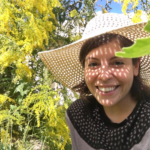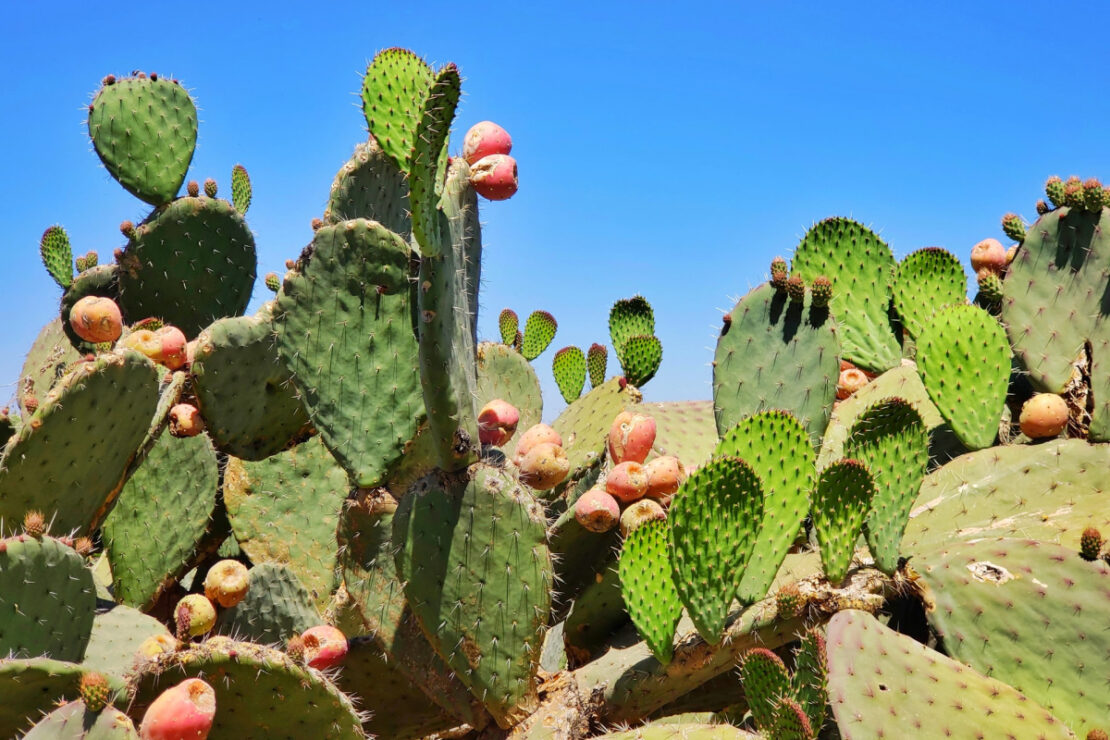
How to Harvest and Prepare Prickly Pear Cactus
The prickly pear (Opuntia spp.) cactus is synonymous with the American West, and what a gift she is to desert dwellers. The name prickly pear refers to a group of around one dozen species in the Opuntia genus (Desert USA, n.d.). Every part of this plant is useful, and prickly pear serves a wide range of use from first aid to food. Don’t let the prickly exterior of this cactus fool you—this plant reminds us that there is always more than meets the eye.
Plant Description
The size of prickly pear can vary greatly. Some species can grow up to six feet tall, while others stick closer to the ground (Desert USA, n.d.). The stacking pads start in clusters low to the ground. As each year passes and new pads spring forth from the tops of the older ones, the prickly pear climbs.
Starting out soft and succulent, the pads (also called nopales) grow woody over time to support the weight of new growth over the years. The pink or yellow flowers of this cactus bloom in the early summer (Hartung, 2011). The fruit (also called a tuna) sets as the flowers wilt, and is ripe when deep red or purple. Both the pads and the fruit of this cactus are edible.
Prickly pear is well adapted to live in the arid climate of its natural habitat. Like other cacti, this plant uses its skin to photosynthesize. This adaptation means the cactus can grow spines, rather than leaves, to protect its precious water stores from thirsty desert dwellers. The vertical orientation of the modified stem, called pads, also helps to preserve water by keeping part of the plant’s surface out of the direct sun during the hottest part of the day.
The surface of the prickly pear is, well, prickly. Tiny nodes, called areoles, cover opuntia’s surface. From these nodes, the cactus grows large spines that are obviously sharp and painful-looking. The plant will also produce glochids from the areoles. Glochids are short, prickly barbs that look less threatening than large thorns, but are actually far more effective at sticking to and irritating the skin of animal predators (Forest Service, 2014).
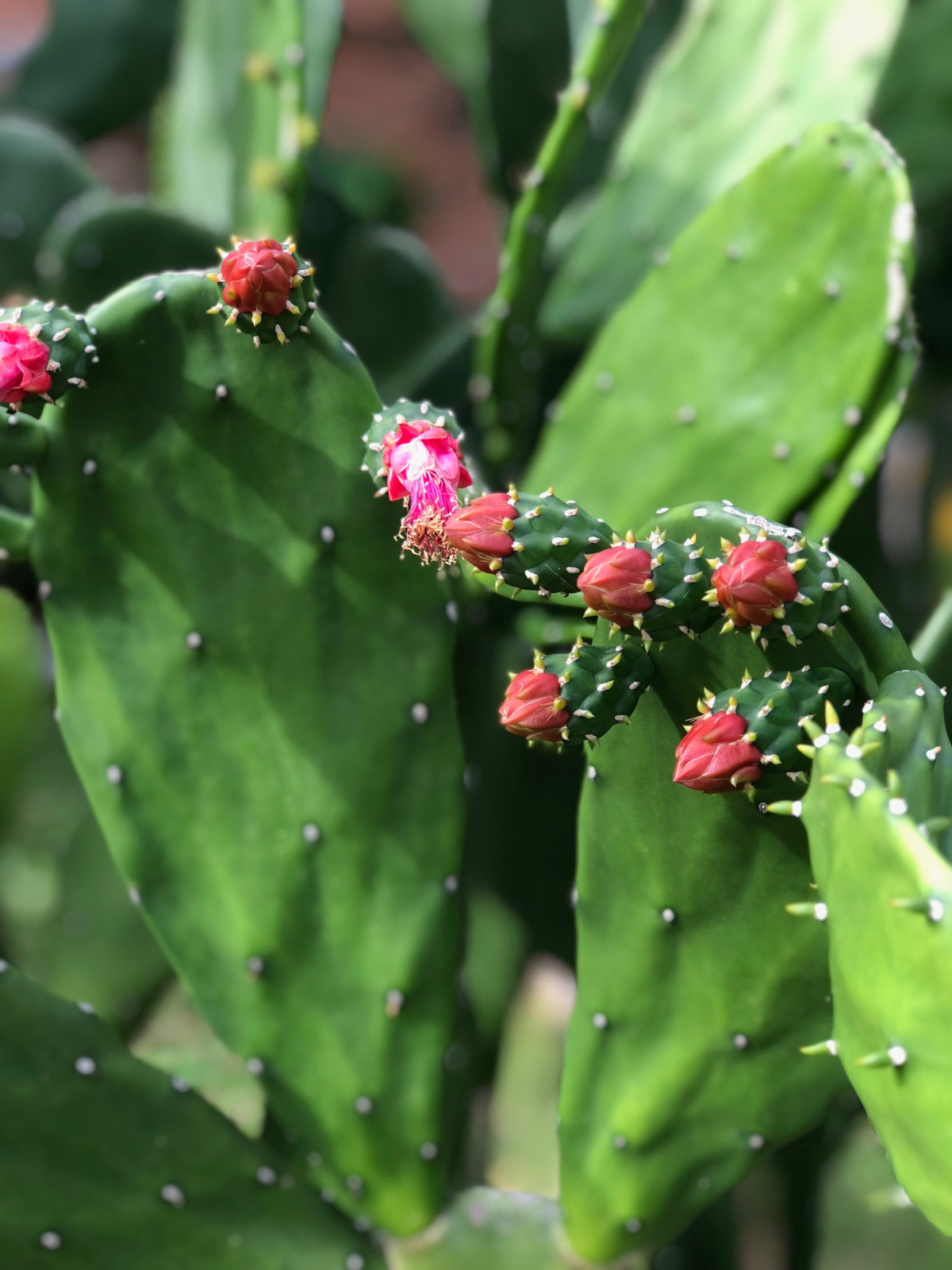
Cultivation
Prickly pear is at home in a warm environment, so it is best to keep this plant in a pot indoors if the winter in your area is much colder than in its natural habitat. Kept potted, this plant can be moved indoors to overwinter and can remain outdoors during warmer months. The high water content of the pads means that freezing conditions could cause the cell walls of the plant to burst as the water in them expands. The damage resulting from a hard freeze can cause pads to fall off of the plant.
If you are ready to try growing prickly pear, purchase a starter for convenience, and plant in sandy well-draining soil either directly in the ground or in a large pot. Planting in a large pot means that you won’t have to repot this prickly pal too often. Water the plant on a regular basis, and allow time in between watering for the roots to dry out. Whether you keep this plant inside or out, make sure it gets plenty of light.
Rather than watering from a bottom tray, or doing a deep watering, prickly pear does best with top watering. The roots of the prickly pear cactus are fibrous, shallow, and spreading. Stretching just under the surface of the soil allows them to access whatever precipitation falls quickly. The cactus transports water to the fleshy pads, and stores it for drier days (Forest Service, 2014).
There are more than a handful of species in the Opuntia genus. The different species vary in elevation preference, potential height, fruit, and pad characteristics (Desert USA, n.d.).
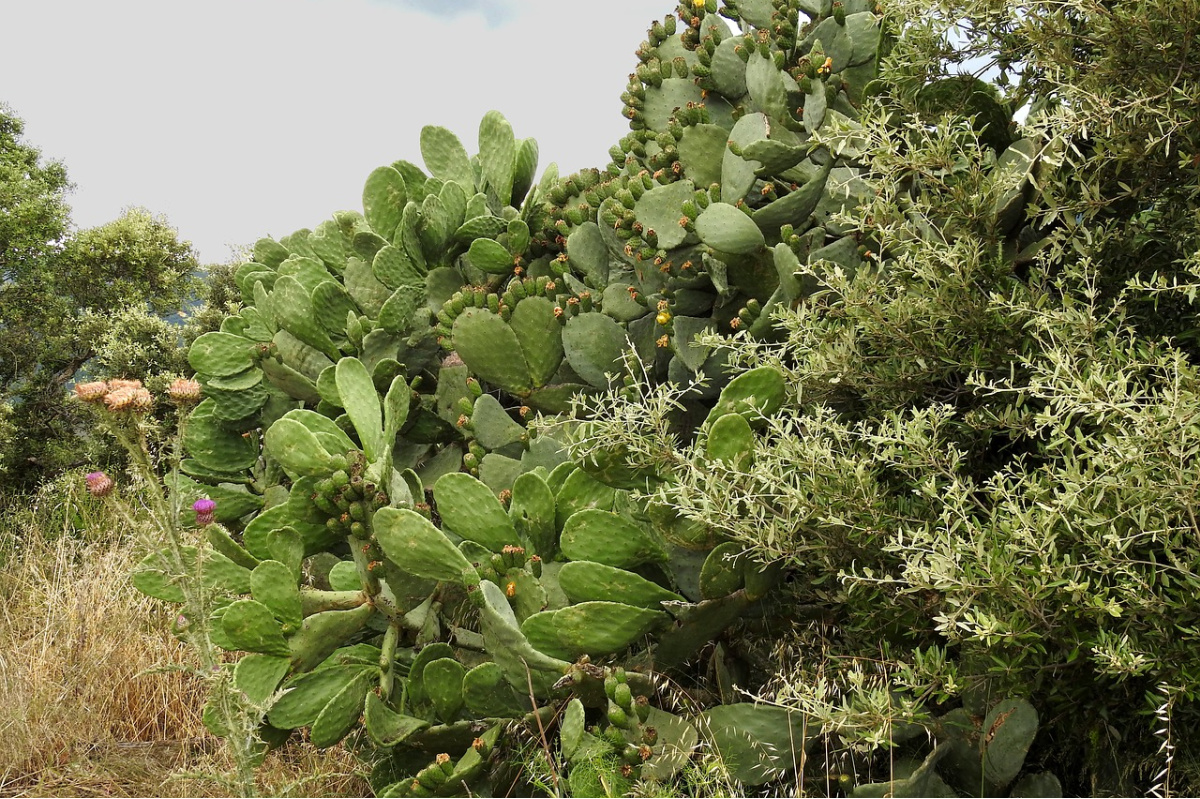
Harvest Prickly Pear Cactus
Due to the spiny nature of this plant, it is important to use the proper equipment and a healthy respect when working with the prickly pear. Always wear thick puncture-proof gloves when handling the fruits or the pads. Tongs can be helpful to grasp pads. Use clippers or a knife to cut pads or fruit from the plant. Always cut at the bottom, where the seam between the two plant parts is visible.
To remove the thorns and glochids, you have a couple of options. One is to use tongs to steady the pad on a flat surface while using a knife to scrape the thorns and glochids from the pads. Always scrape the thorns and glochids away from you—and from anyone else for that matter! You don’t want to fling those tiny barbs around.
If you live in a space where you can safely build a fire in a grill or a fire pit then you may prefer to process your prickly pear over an open flame. To do this, place a grate over the fire, and place the harvested prickly pear fruits or pad over the open flame for a few moments to burn the spines from the plant. Use tongs to place and remove plant parts from the fire, and use safety measures necessary when working with an open flame. Plunge the pad or fruits into an ice water bath to bring the temperature down, and make them safe to handle immediately.
After the prickly parts of the prickly pear are removed, wash the pads. Use kitchen gloves to avoid coming into contact with any stray remaining glochids. It is best to consume the prickly pear immediately, or store it in the refrigerator for up to a week. Pads and fruits may be frozen for future use.
Working with a plant is often just as good a salve for the soul as the constituents housed in the fibers of the plant are for the body. Though you wouldn’t necessarily guess it just by looking, prickly pear has a wealth of gifts to offer us. These gifts can only be obtained with the use of tenderness and attentiveness. This plant reminds us that thoughtfulness and care are important parts of gaining access to the gifts of our relationships with other living beings.
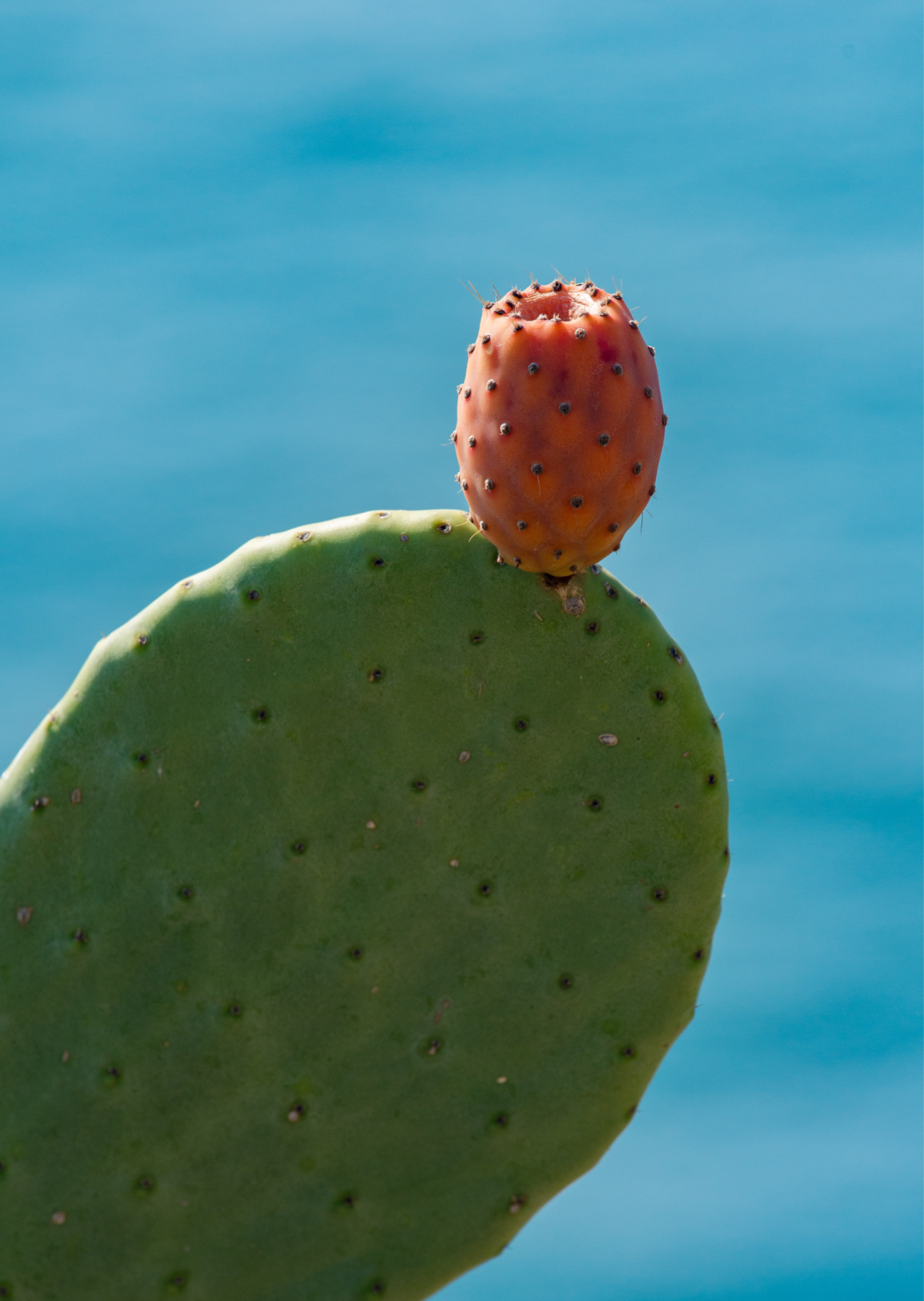
Using the Cactus Pads
The young pads of the prickly pear are tender and succulent. Buds of the new pads appear in the spring and stretch and flatten themselves out as they grow. Once the pad reaches the size of your hand, or about 4-6 inches, they are ready to harvest.
The mucilaginous inner flesh of the pads is demulcent and soothing to the internal tissues of the digestive system. Consuming the pads of the prickly pear can help lower LDL cholesterol by limiting the liver’s production of it, while having no effect on the liver’s ability to produce HDL (Sánchez, 2014).
Also, the inner flesh of the prickly pear pads can reduce blood glucose levels in people with type 2 diabetes. One study found that the addition of nopales has the potential to reduce the glycemic load of a meal by 20-48% (Bacardi-Gason et al., 2007). The addition of nopales to a meal has the potential to aid in improving metabolic control for diabetic people. While it will not lower the blood sugar of a healthy person, prickly pear is contraindicated for people on insulin (Sanchez, 2014).
The benefits of prickly pear don’t stop there. Peter Bigfoot, desert survivalist and bioregional herbalist, teaches participants of his survival classes about the first aid uses of prickly pear cactus. The pads serve well as a kind of emergency bandage for scrapes and abrasions. To use as a bandage, clean the outside of the pad of thorns and glochids as mentioned above. Then slice the pad, along the edge, into two halves. Place the inner portion of the pad against the wound.
The inner flesh of the pad has both a soothing and drawing effect that is excellent for wound care. These actions make prickly pear the perfect poultice for burns (Sànchez, 2014). Clean and prepare the pads as above. Either place the pad on the burned area and bandage, or scrape the pulp from the center, and spread over larger burned areas (such as in cases of sunburn).
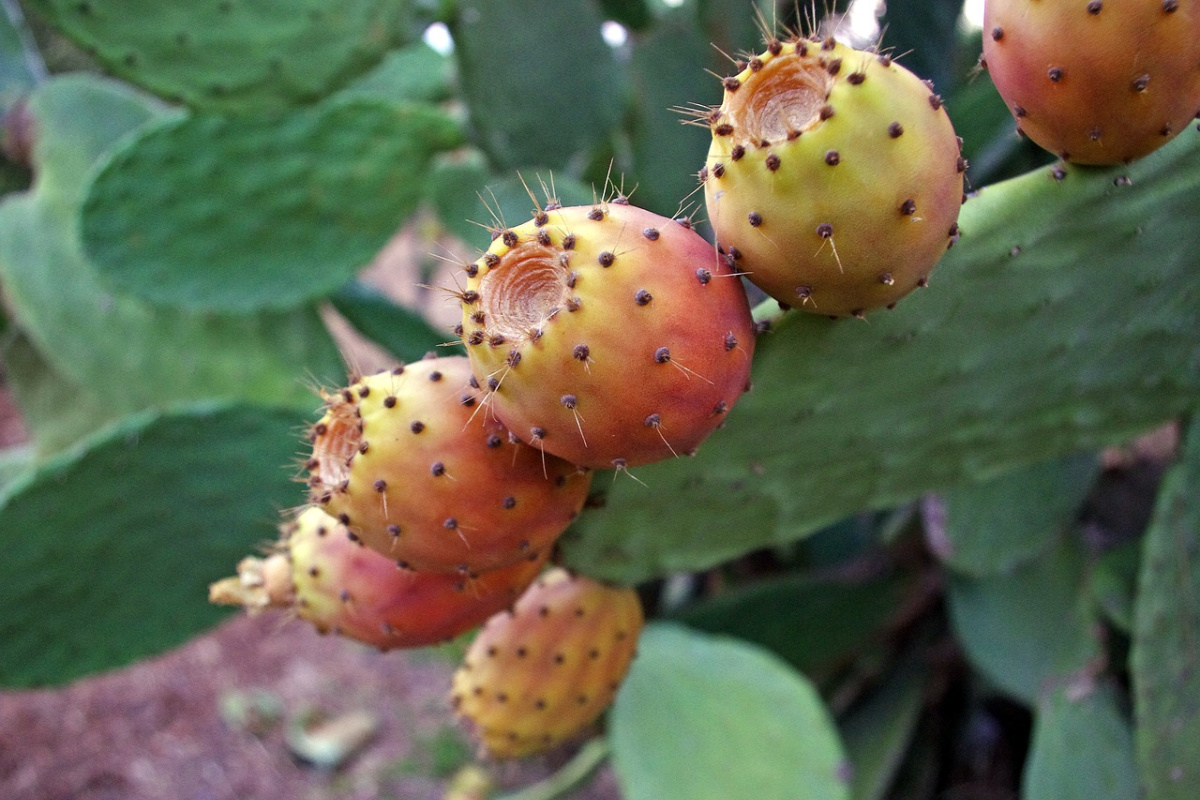
Using the Fruit
Prickly pear fruits are a good source of vitamins C, E, and K as well as minerals and amino acids. The flavonoid and antioxidant profile for this fruit are also impressive and contribute to the benefits we gain from ingesting the delightfully fuschia colored fruit. Not overly sweet, the fruit is only about 15% sugar, which is comparable to an apple (Cota-Sánchez, 2016).
The fruit juice is added to lemonades and iced teas. You can also use the prickly pear tunas to make Jellies, candies, syrups, popsicles, and salsas. Even the seeds are edible. With jellies, popsicles, salsas, and in other food applications, the seeds may be left in based on the chef’s preference. For candies, syrups, or beverages, you will want to use a cheesecloth to separate the juice from the pulp and seeds (which are plentiful).
Where to Find Prickly Pear
While nopales and cactus tunas are not exactly mainstream market staples, they are at least seasonally common in Mexican goods markets. Find one in your area, and scope out the produce section. You may also find some fun cactus items in the prepared foods, like cactus pickles, which are worth a try.
Below, you’ll find simple recipe suggestions for how you can use both the tuna and the nopales of the cactus.
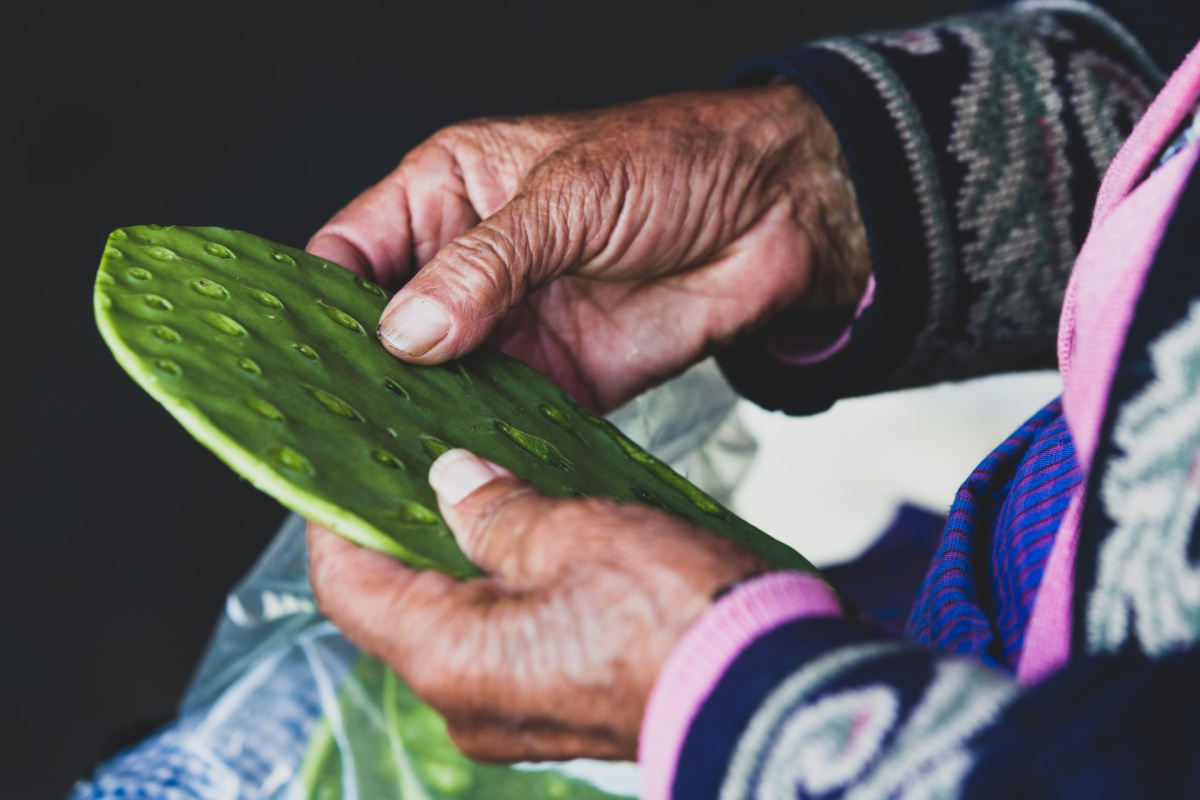
Nopales and Black Beans
1 can of black beans
1 medium onion
1 prickly pear pad
4 large cloves of garlic
2 tablespoon olive oil
2 tablespoon chicken or vegetable broth
½ tablespoon ground cumin
Salt to taste
- Get all of your ingredients ready before you begin cooking.
- Clean the prickly pear pad, remove the outer edge of the pad, and dice into ½ inch cubes.
- Thinly slice the onion.
- Mince the garlic.
- Open, drain, and rinse the canned beans.
- Once all of your ingredients are ready to go, heat the olive oil in a pan over medium heat. Add the onions to the pan, with a sprinkle of salt, and saute until they become translucent.
- Once the onions are translucent add the nopales to the pan.
- When the onions begin to caramelize add in the garlic, stir the pan frequently at this point to prevent the garlic from burning.
- Once the smell of garlic starts to waft up from the pan, add the broth, and deglaze the pan. Next add the cumin, and the beans.
- While the dish is coming together taste the beans and salt to taste.
- Once the beans are warm all the way through, they are ready to eat.
To Use:
These beans can be eaten by themselves. Or, I like to top them with some chunks of avocado. They are also great on tostadas, with eggs for breakfast, or as a side dish.
Prickly Pear Quick Jam
Adapted from Sure Jell’s freezer jam recipe (My Food and Family, n.d.)
4 cups sugar
2 cups prickly pear fruit (peeled, seeded, and diced)
1 package Sure Jell (fruit pectin)
¾ cup water
- Remove spines from the outside of the prickly pear tuna using either the scrape-off method or the burn off method. If you burn the thorns off the fruits, place them in an ice bath after to make the fruit safe to handle.
- Slice the fruit open, remove the seeds, scoop the flesh out, and dice or mince depending on how much body you want the final product to contain.
- In a large bowl, mix four cups of sugar into the diced fruit, and set aside.
- Mix one package of Sure Jell fruit pectin into three-fourths cup water in a small saucepan.
- Bring the mixture to a boil over high heat. Boil for one minute. Stir the pectin and water constantly throughout the process to prevent it from clumping.
- Pour the hydrated pectin into the fruit and sugar mixture. Stir for three minutes, or until the sugar has dissolved.
- Portion your jam into containers, leaving a half-inch gap at the top, for expansion. Place the containers in the freezer for 24 hours.
To Use:
This jam will keep in the refrigerator for up to three weeks, or in the freezer for up to a year. Thaw the jam before serving.
Note: The flesh of the prickly pear is very pigmented, so you may want to cover your workspace if staining the countertops is a concern.
In Closing,
Prickly pear is a delightful summertime forage if you live in areas where the plant is abundant within the local ecosystem, and it can be easily brought into a cultivated space if not. With a bevy of health benefits and delicious applications, it is easy to see how the fruit has become so well-loved—in spite of its intimidating packaging. This plant reminds us there is more than meets the eye, and that risk often leads to reward.
Be sure to check out: 5 Herbs That Thrive in a Southwest Garden
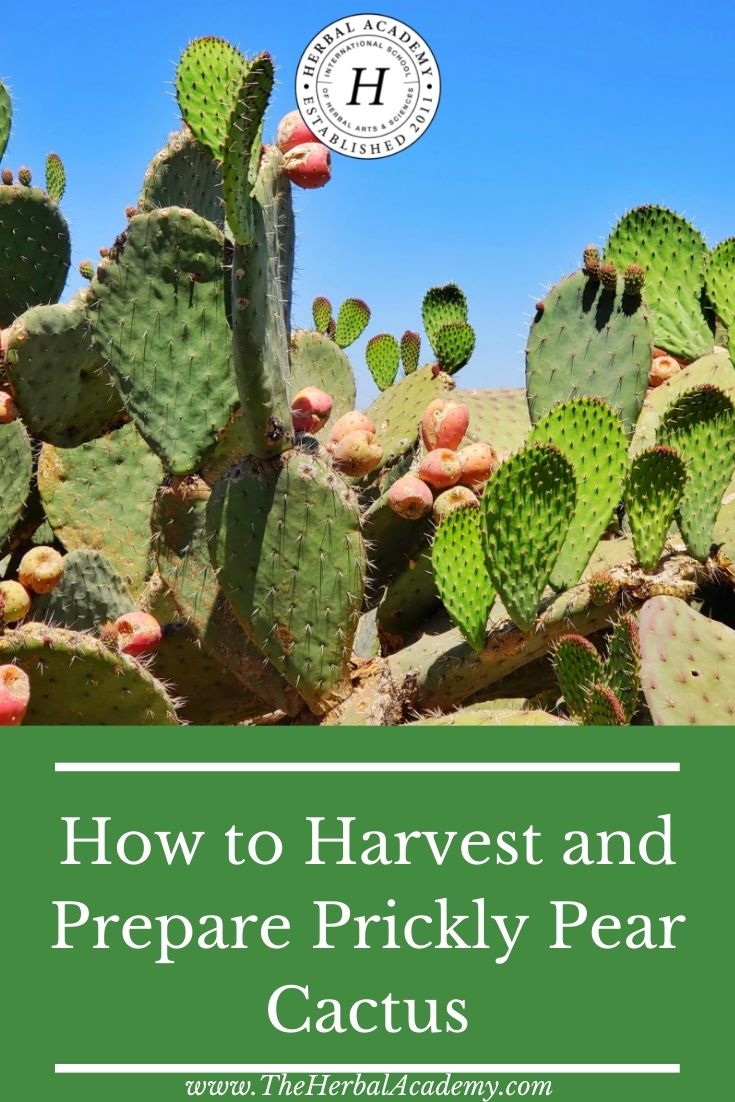
REFERENCES
Bacardi-Gascon, M., Dueñas-Mena, D. BCS, & Jimenez-Cruz, A. (2007). Lowering effects of postprandial glycemic response of nopales added to Mexican breakfasts. Diabetes Care: 30(5): 1264-1265. https://doi.org/10.2337/dc06-2506
Cota-Sánchez, J.H. (2016). Nutritional composition of fruit cultivars. Cambridge, MA: Academic Press.
Hartung, T. (2011). Homegrown herbs: A complete guide to growing, using, and enjoying more than 100 herbs. North Adams, MA: Storey Publishing.
Desert USA. (n.d.). Prickly pear cactus: Genus Opuntia [Website]. Retrieved from https://www.desertusa.com/cactus/prickly-pear-cactus.html
Forest Service. (2014). Field guide for managing prickly pear in the southwest. [PDF]. United States Department of Agriculture. Retrieved from https://www.fs.usda.gov/Internet/FSE_DOCUMENTS/stelprdb5410122.pdf
Sánchez, J. C. (2014). Breaking ground. Tempe, AZ: JoAnn Castigliego Sánchez.
30 minutes to homemade Sure.Jell strawberry freezer jam. My Food and Family. (n.d.). 30 minutes to homemade Sure.Jell strawberry freezer jam. [Website]. KraftHeinz. Retrieved from https://www.myfoodandfamily.com/recipe/050137/30-minutes-homemade-surejell-strawberry-freezer-jam

